#> Simple feature collection with 6 features and 18 fields
#> Geometry type: MULTIPOLYGON
#> Dimension: XY
#> Bounding box: xmin: 749383.6 ymin: 2913059 xmax: 801174.4 ymax: 2965741
#> Projected CRS: NAD83 / Massachusetts Mainland (ftUS)
#> # A tibble: 6 × 19
#> grid_id land_area canopy_gain canopy_loss canopy_no_change canopy_area_2014
#> <chr> <dbl> <dbl> <dbl> <dbl> <dbl>
#> 1 AB-4 795045. 15323. 3126. 53676. 56802.
#> 2 I-33 265813. 8849. 11795. 78677. 90472.
#> 3 AO-9 270153 6187. 1184. 26930. 28114.
#> 4 H-10 2691490. 73098. 80362. 345823. 426185.
#> 5 V-7 107890. 219. 3612. 240. 3852.
#> 6 Q-22 2648089. 122211. 154236. 1026632. 1180868.
#> # ℹ 13 more variables: canopy_area_2019 <dbl>, change_canopy_area <dbl>,
#> # change_canopy_percentage <dbl>, canopy_percentage_2014 <dbl>,
#> # canopy_percentage_2019 <dbl>, change_canopy_absolute <dbl>,
#> # mean_temp_morning <dbl>, mean_temp_evening <dbl>, mean_temp <dbl>,
#> # mean_heat_index_morning <dbl>, mean_heat_index_evening <dbl>,
#> # mean_heat_index <dbl>, geometry <MULTIPOLYGON [US_survey_foot]>spatialsample:
A tidy approach to spatial cross-validation
About Me
Mike Mahoney
PhD candidate in environmental science
Research assistant, CAFRI
Past: Posit (formerly RStudio), Permian Global
These slides: mm218.dev/ehadec2023

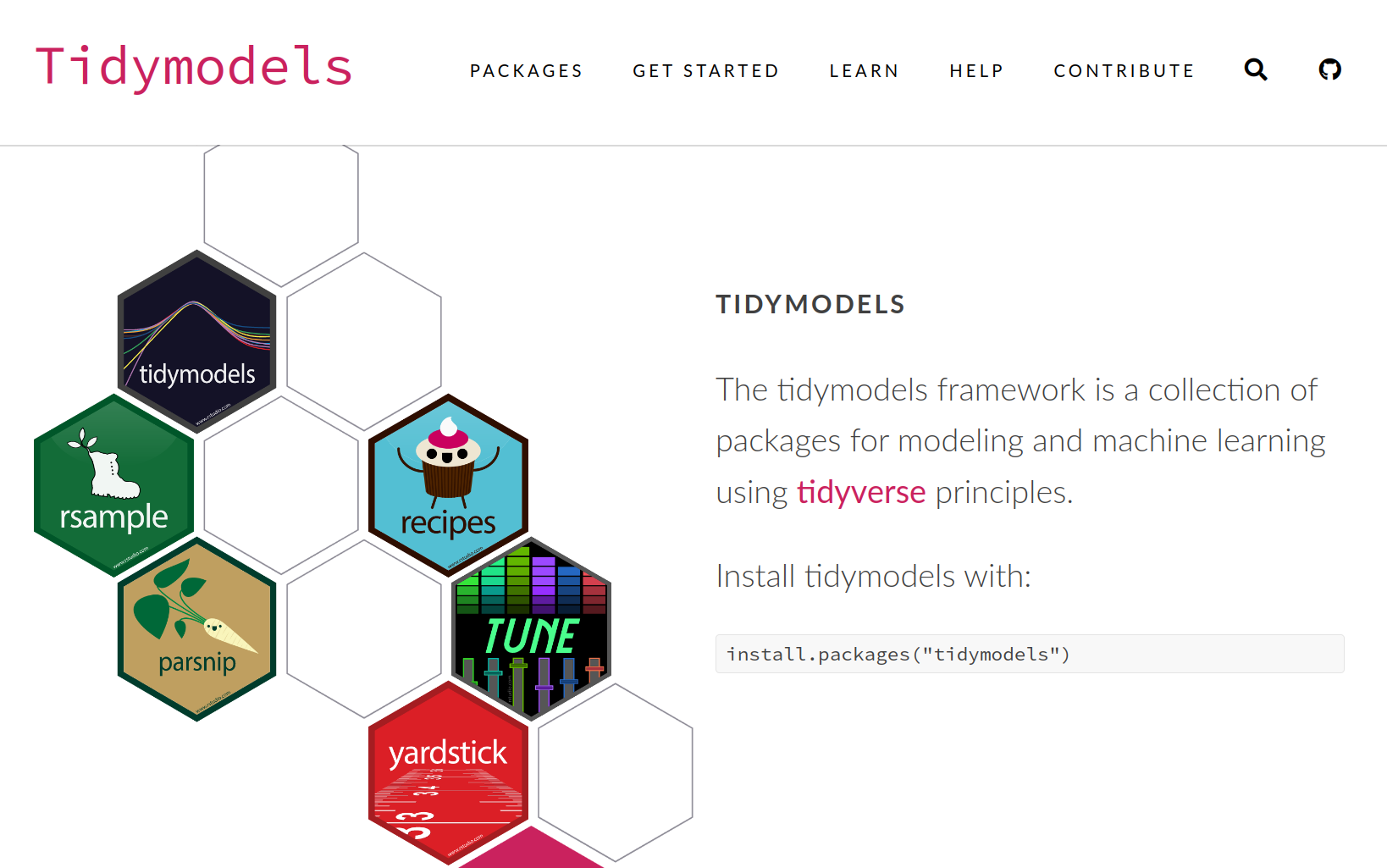
spatialsample: A tidy approach to spatial cross-validation - https://mm218.dev/ehadec2023
Data splitting:
Figure adapted from https://workshops.tidymodels.org/
spatialsample: A tidy approach to spatial cross-validation - https://mm218.dev/ehadec2023
Image from https://www.tmwr.org/software-modeling.html
spatialsample: A tidy approach to spatial cross-validation - https://mm218.dev/ehadec2023
Cross-validation:

Figure adapted from https://workshops.tidymodels.org/
spatialsample: A tidy approach to spatial cross-validation - https://mm218.dev/ehadec2023
rsample and friends
rsample and friends
#> # 10-fold cross-validation
#> # A tibble: 10 × 2
#> splits id
#> <list> <chr>
#> 1 <split [613/69]> Fold01
#> 2 <split [613/69]> Fold02
#> 3 <split [614/68]> Fold03
#> 4 <split [614/68]> Fold04
#> 5 <split [614/68]> Fold05
#> 6 <split [614/68]> Fold06
#> 7 <split [614/68]> Fold07
#> 8 <split [614/68]> Fold08
#> 9 <split [614/68]> Fold09
#> 10 <split [614/68]> Fold10rsample and friends
#> Simple feature collection with 6 features and 18 fields
#> Geometry type: MULTIPOLYGON
#> Dimension: XY
#> Bounding box: xmin: 749383.6 ymin: 2913059 xmax: 781922.7 ymax: 2965782
#> Projected CRS: NAD83 / Massachusetts Mainland (ftUS)
#> # A tibble: 6 × 19
#> grid_id land_area canopy_gain canopy_loss canopy_no_change canopy_area_2014
#> <chr> <dbl> <dbl> <dbl> <dbl> <dbl>
#> 1 AB-4 795045. 15323. 3126. 53676. 56802.
#> 2 I-33 265813. 8849. 11795. 78677. 90472.
#> 3 H-10 2691490. 73098. 80362. 345823. 426185.
#> 4 V-7 107890. 219. 3612. 240. 3852.
#> 5 Q-22 2648089. 122211. 154236. 1026632. 1180868.
#> 6 X-4 848558. 8275. 1760. 6872. 8632.
#> # ℹ 13 more variables: canopy_area_2019 <dbl>, change_canopy_area <dbl>,
#> # change_canopy_percentage <dbl>, canopy_percentage_2014 <dbl>,
#> # canopy_percentage_2019 <dbl>, change_canopy_absolute <dbl>,
#> # mean_temp_morning <dbl>, mean_temp_evening <dbl>, mean_temp <dbl>,
#> # mean_heat_index_morning <dbl>, mean_heat_index_evening <dbl>,
#> # mean_heat_index <dbl>, geometry <MULTIPOLYGON [US_survey_foot]>rsample and friends
vfold_rset$splits |>
lapply(analysis) |>
lapply(lm, formula = canopy_area_2019 ~ land_area * mean_temp) |>
mapply(
FUN = \(mod, rsplit) {
assessment <- assessment(rsplit)
yardstick::rmse_vec(assessment[["canopy_area_2019"]], predict(mod, assessment))
},
mod = _,
rsplit = vfold_rset$splits
) |>
mean()#> [1] 375792rsample and friends
workflow() |>
add_model(linear_reg()) |>
add_formula(canopy_area_2019 ~ land_area * mean_temp) |>
fit_resamples(vfold_cv(spatialsample::boston_canopy)) |>
collect_metrics()#> # A tibble: 2 × 6
#> .metric .estimator mean n std_err .config
#> <chr> <chr> <dbl> <int> <dbl> <chr>
#> 1 rmse standard 377089. 10 20426. Preprocessor1_Model1
#> 2 rsq standard 0.353 10 0.0178 Preprocessor1_Model1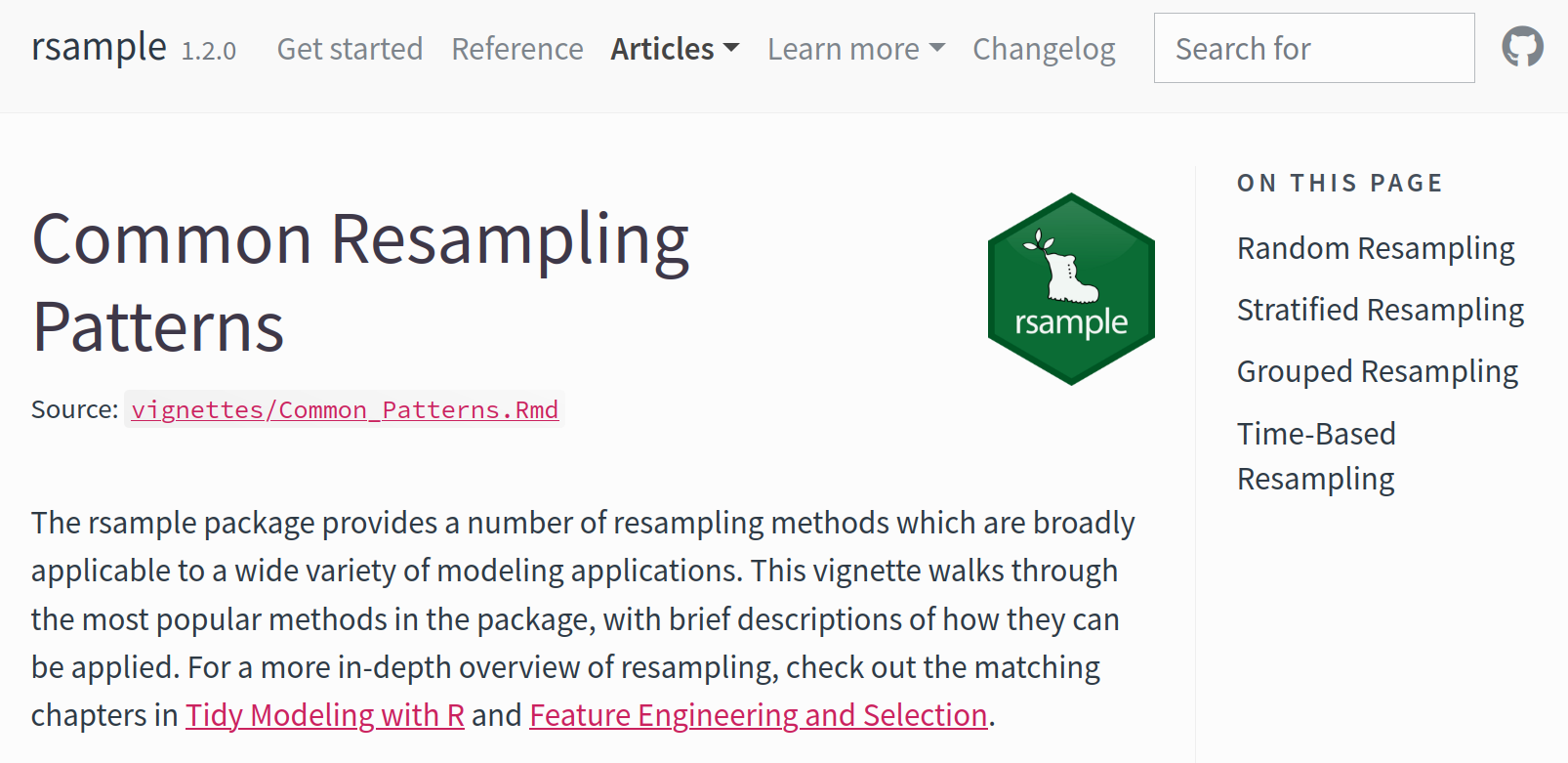
What does “new data” mean?
Are these folds really unrelated?
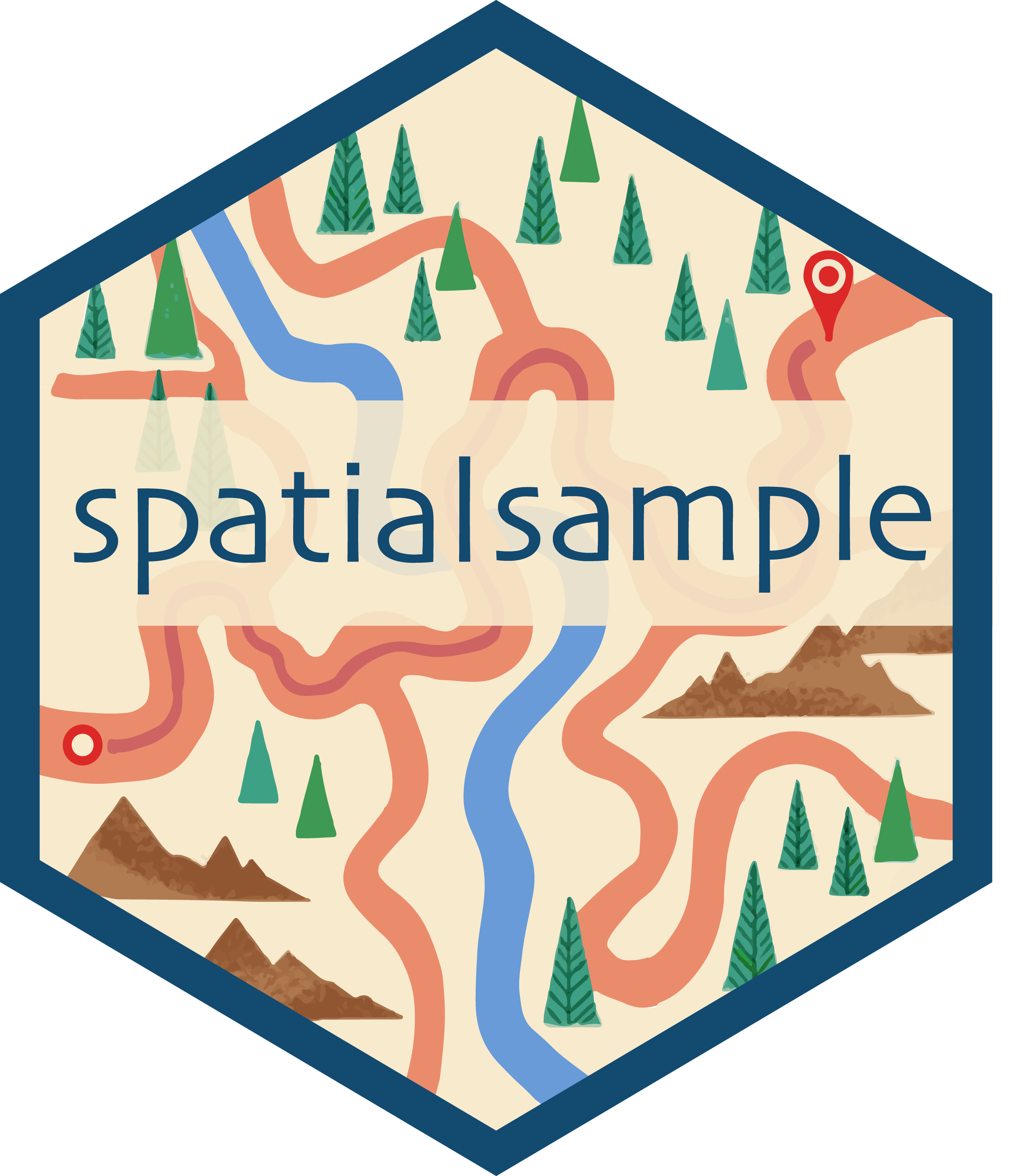
Spatial clustering
Spatial clustering
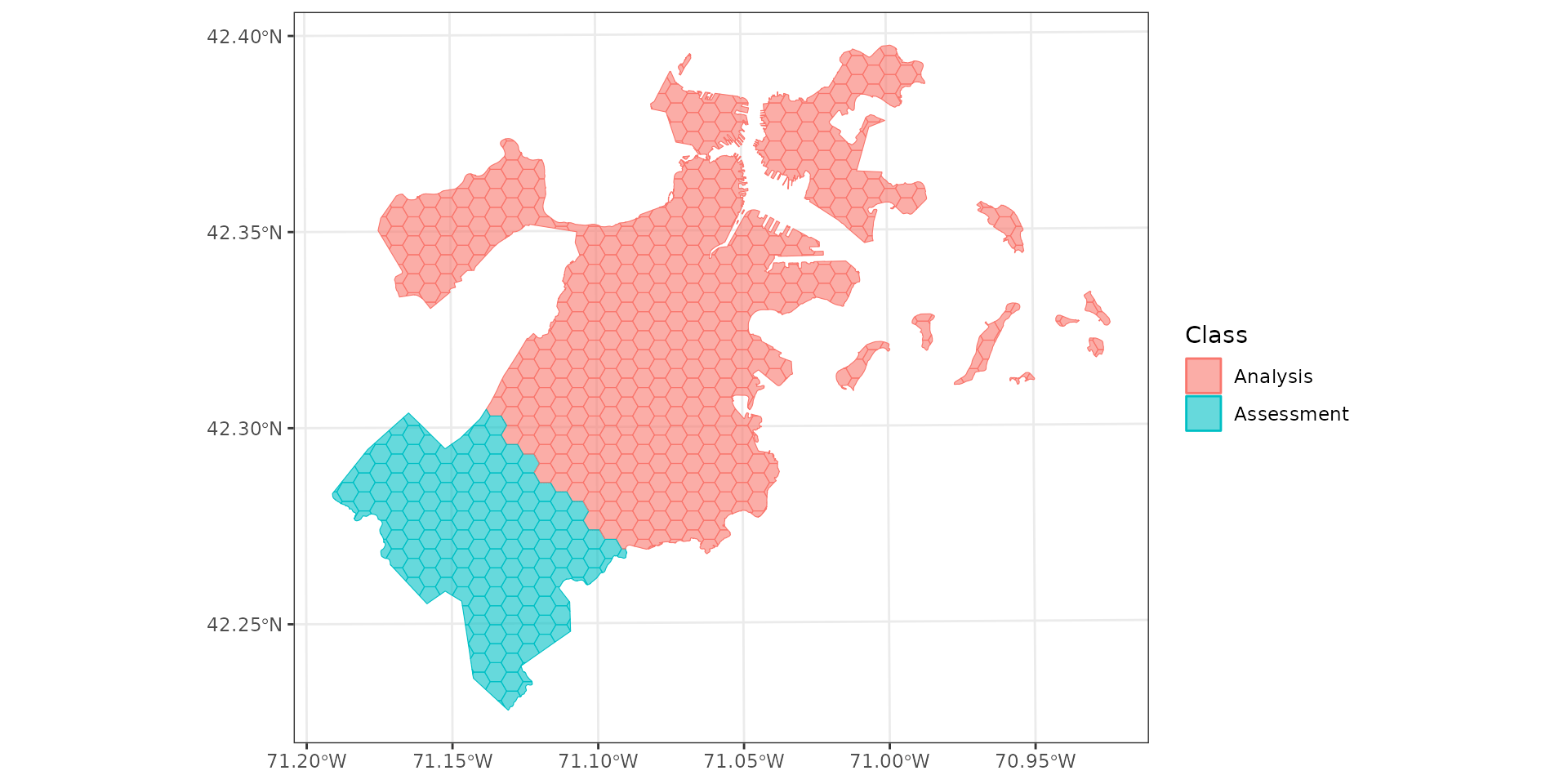
Spatial blocking
Spatial blocking
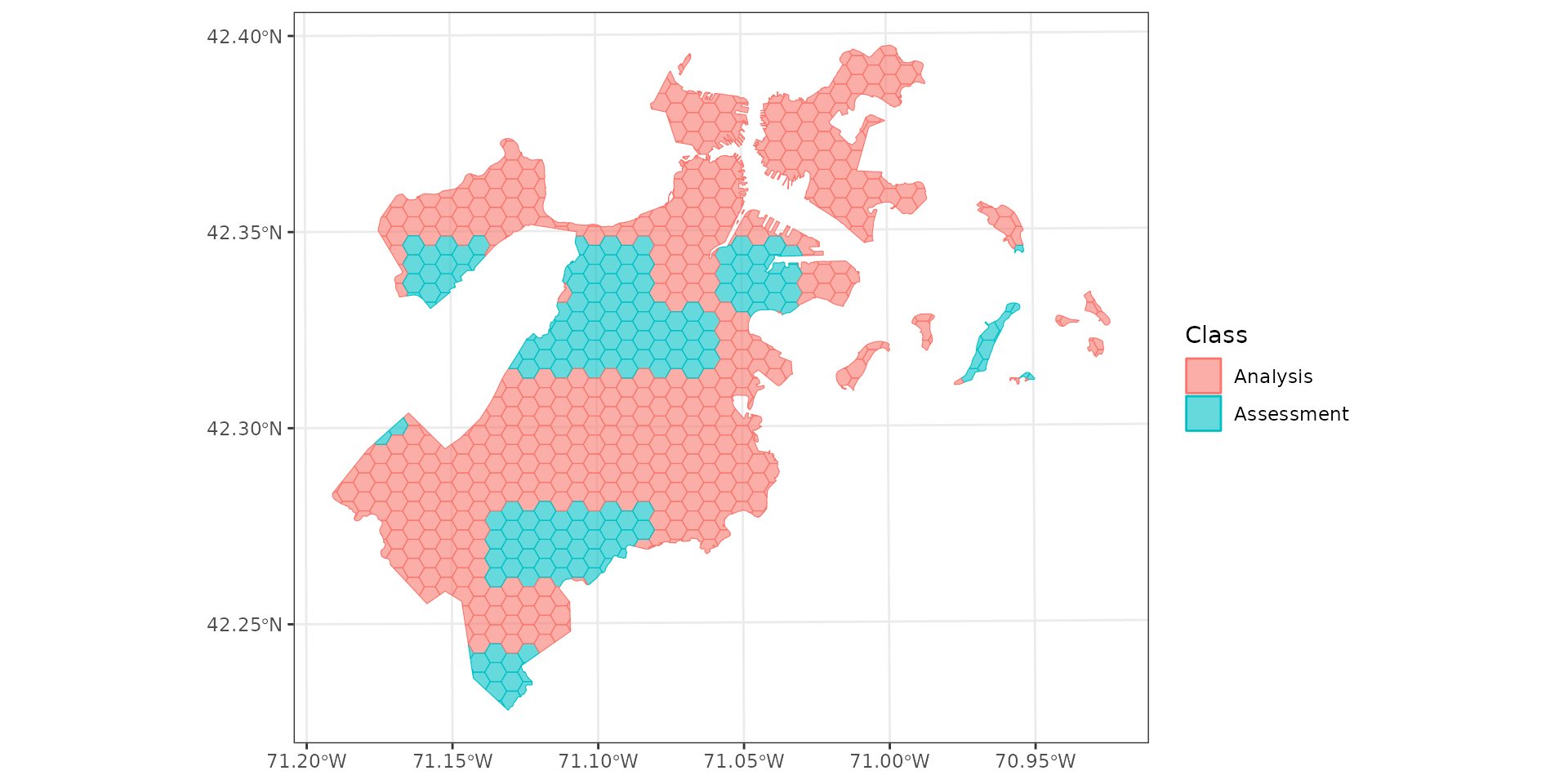
Spatial blocking
Spatial LODO
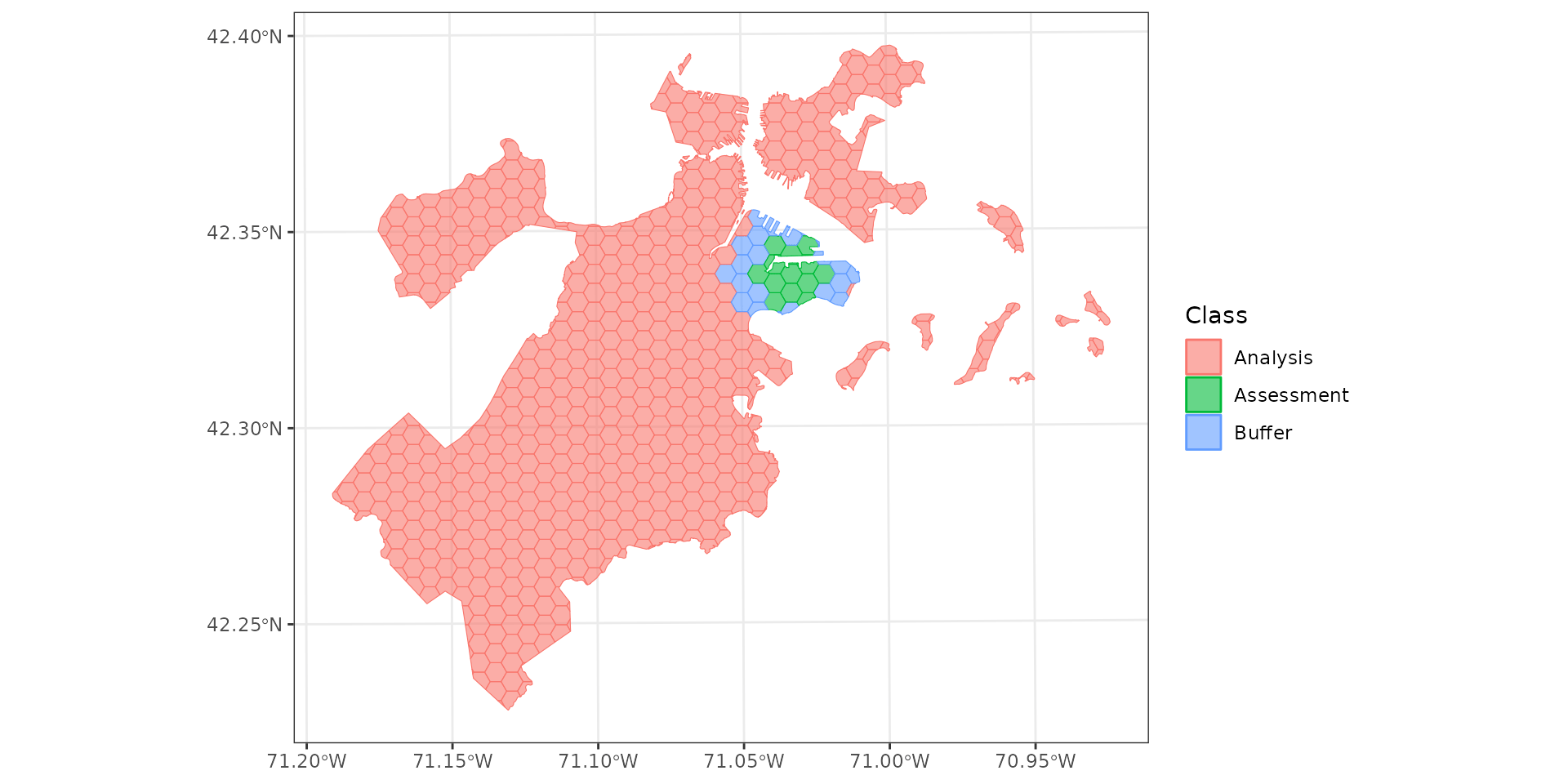
Buffering
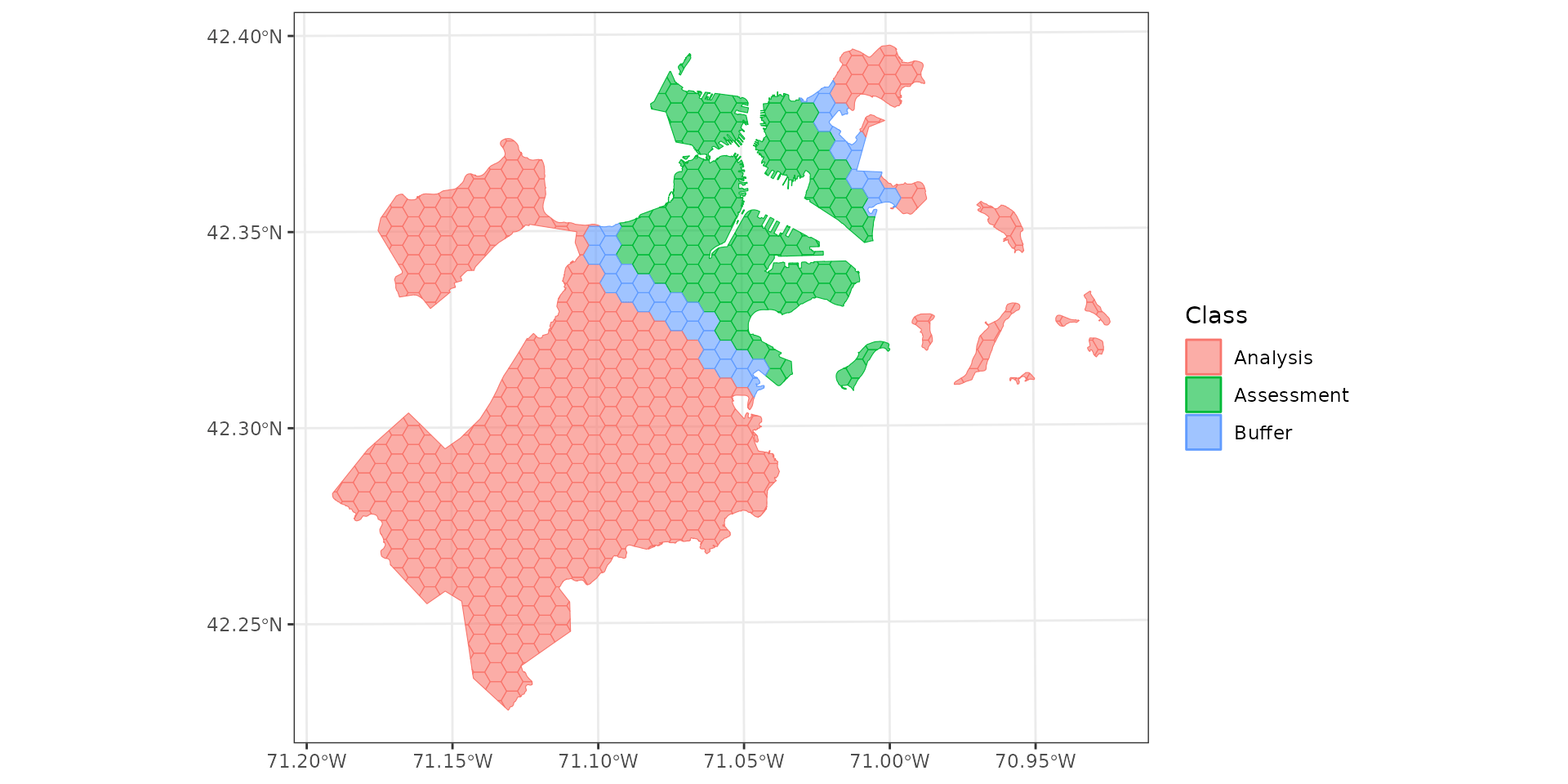
boston_clusters <- spatial_clustering_cv(boston_canopy)
boston_clusters$splits |>
lapply(analysis) |>
lapply(lm, formula = canopy_area_2019 ~ land_area * mean_temp) |>
mapply(
FUN = \(mod, rsplit) {
assessment <- assessment(rsplit)
yardstick::rmse_vec(assessment[["canopy_area_2019"]], predict(mod, assessment))
},
mod = _,
rsplit = boston_clusters$splits
) |>
mean()#> [1] 949744.3tidymodels integration
workflow() |>
add_model(linear_reg()) |>
add_formula(canopy_area_2019 ~ land_area * mean_temp) |>
fit_resamples(vfold_cv(spatialsample::boston_canopy)) |>
collect_metrics()#> # A tibble: 2 × 6
#> .metric .estimator mean n std_err .config
#> <chr> <chr> <dbl> <int> <dbl> <chr>
#> 1 rmse standard 377195. 10 21949. Preprocessor1_Model1
#> 2 rsq standard 0.359 10 0.0239 Preprocessor1_Model1workflow() |>
add_model(linear_reg()) |>
add_formula(canopy_area_2019 ~ land_area * mean_temp) |>
fit_resamples(spatial_clustering_cv(spatialsample::boston_canopy)) |>
collect_metrics()#> # A tibble: 2 × 6
#> .metric .estimator mean n std_err .config
#> <chr> <chr> <dbl> <int> <dbl> <chr>
#> 1 rmse standard 887760. 10 499093. Preprocessor1_Model1
#> 2 rsq standard 0.327 10 0.0557 Preprocessor1_Model1Other features:
All methods implemented in spatialsample itself
C++ implementation of most computationally-intensive parts
Works with projected & geographic CRS
Arguments accept explicit units
Aware of CRS units, functions do unit conversion
Handles all geometry types\(^*\)
Should we be doing this at all?

Should we be doing this at all?
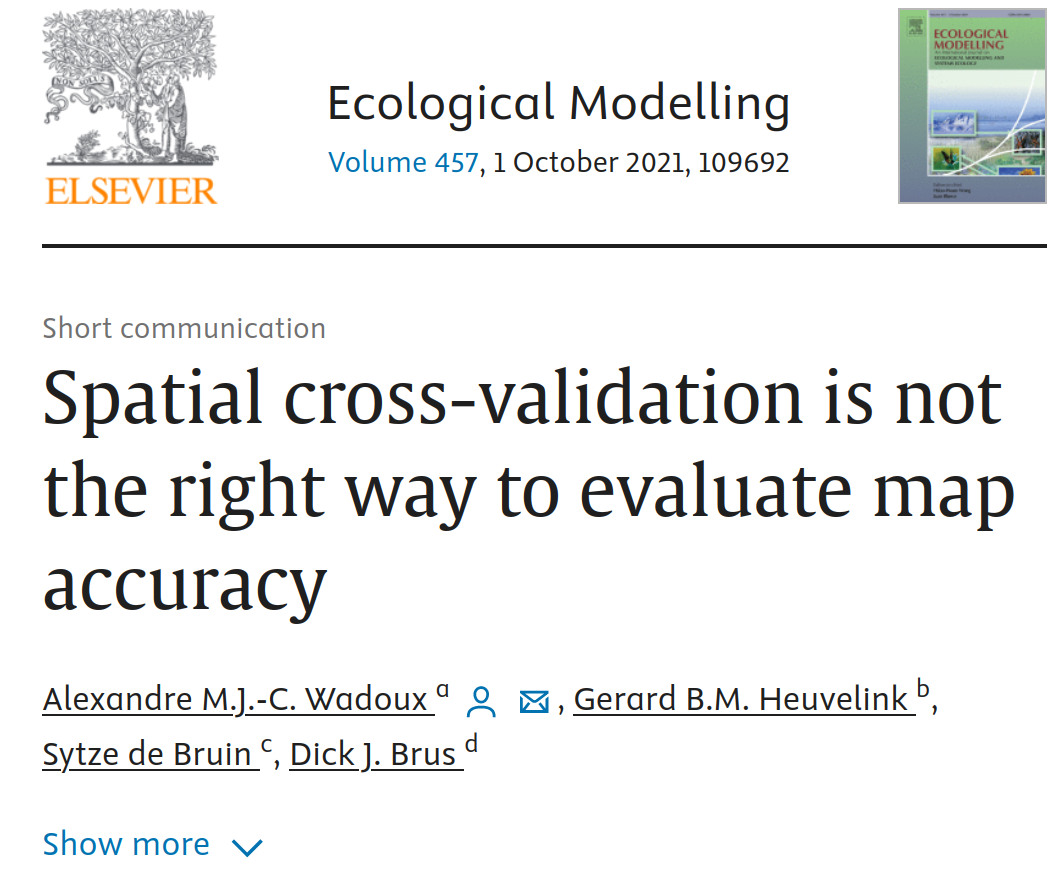
Should we be doing this at all?
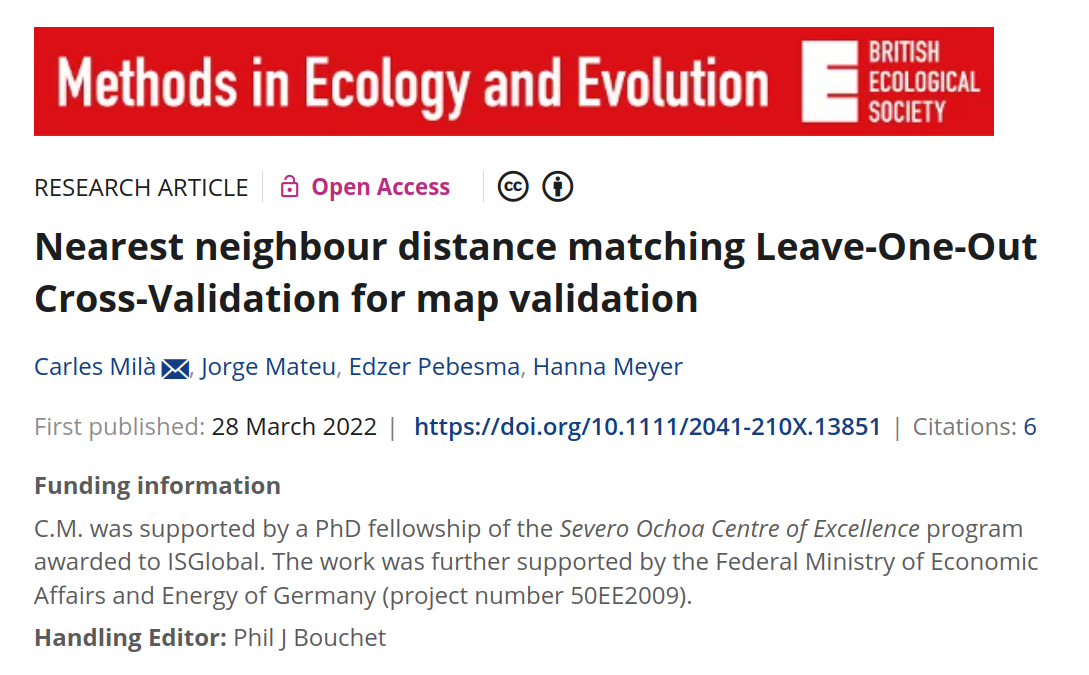
Should we be doing this at all?

From Mila et al. (2022). “Nearest neighbour distance matching Leave-One-Out Cross-Validation for map validation”. Methods in Ecology and Evolution 13(6), pp 1304-1316. doi: 10.1111/2041-210X.13851.
Should we be doing this at all?
When extrapolating into new regions
When working with clustered or convenience samples
When interpolating within the sampled area
When an independent probability sample exists
Thank you!
Find me online:
@mikemahoney218
Slides available at mm218.dev/ehadec2023
More spatialsample: https://spatialsample.tidymodels.org/
spatialsample: A tidy approach to spatial cross-validation - https://mm218.dev/ehadec2023